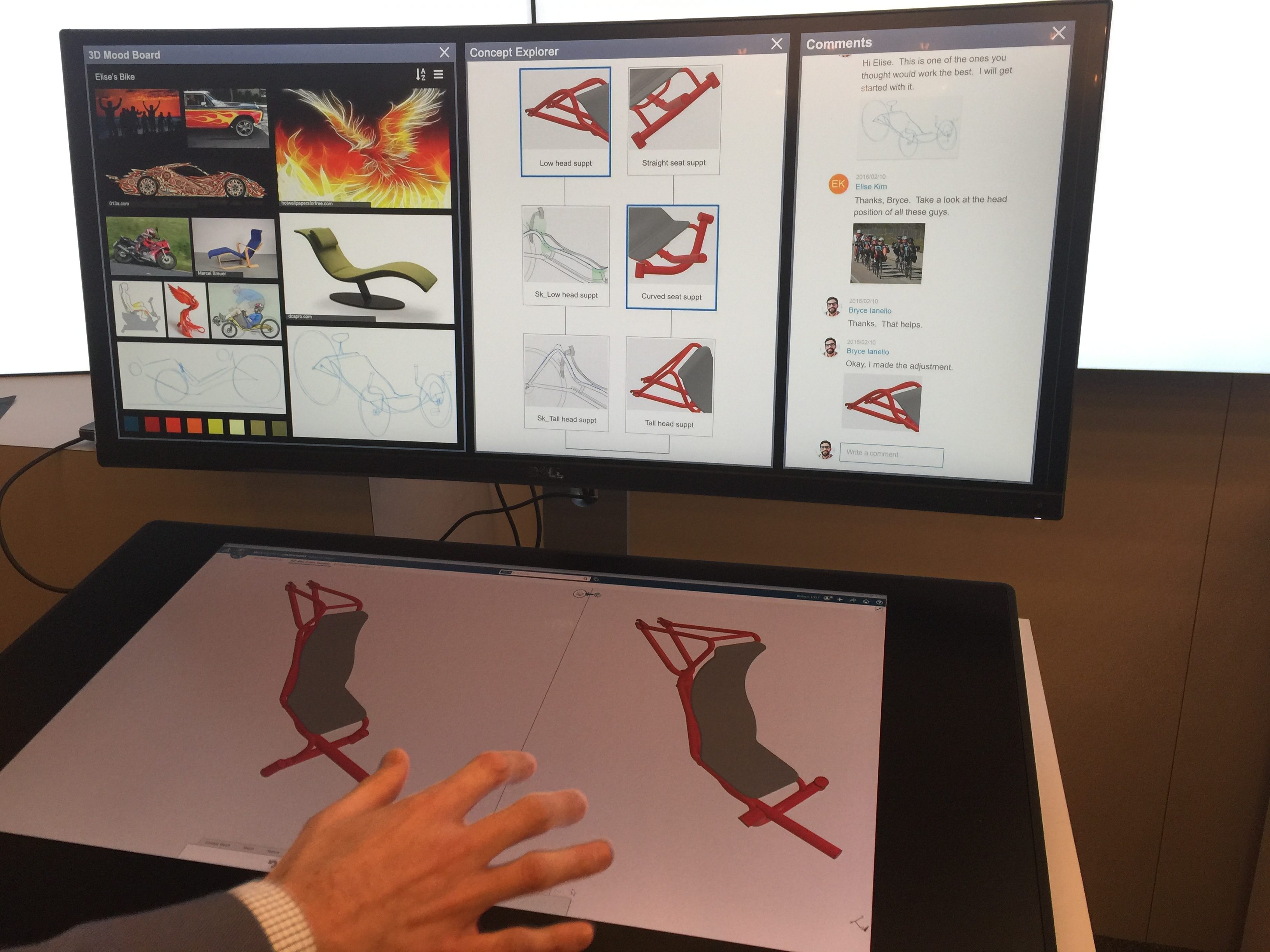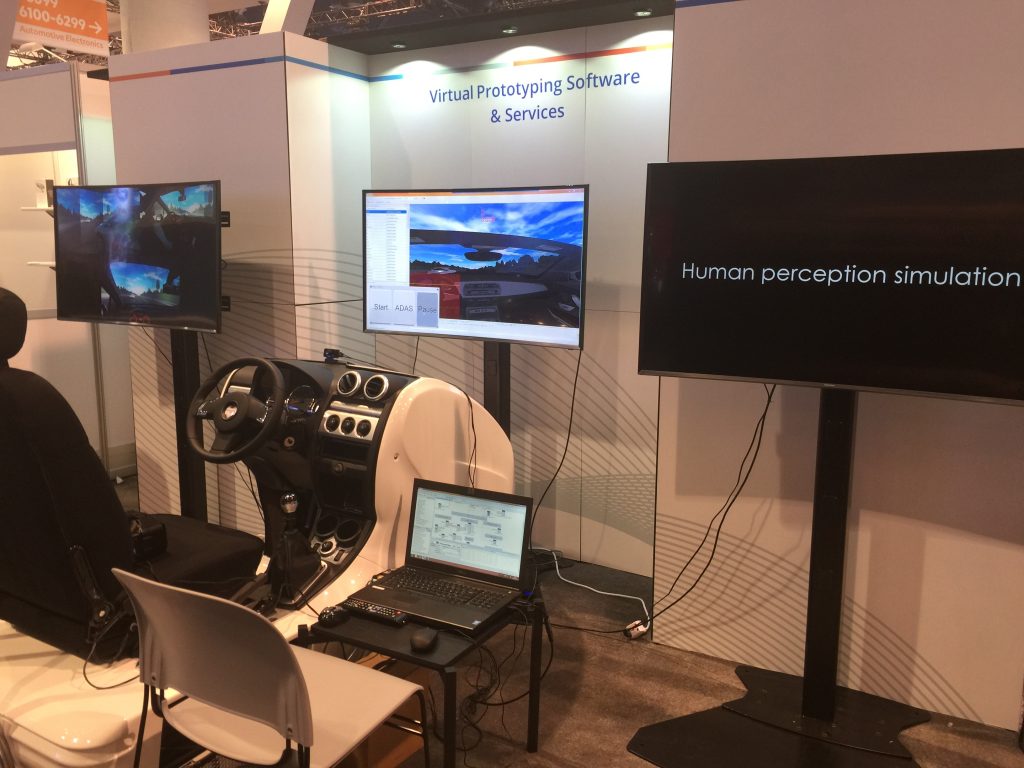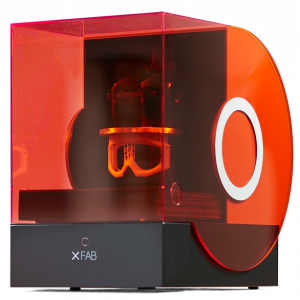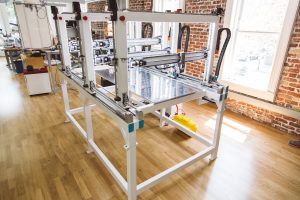In Search of Engineering Tech at CES

Demonstrating collaboration with Dell Canvas and SOLIDWORKS.
Latest News
January 16, 2017
 More than 175,000 people attended the 50th anniversary of CES in Las Vegas.
More than 175,000 people attended the 50th anniversary of CES in Las Vegas.My fitness tracker tells me I walked 10.9 miles the first day of CES 2017. That seems like a lot to my aching feet, but barely scratches the surface of what the Consumer Technology Association (CTA) says was 2.6 million sq. ft. of net space. Even that much space still felt crowded with 175,000+ attendees, most of whom were probably in Vegas January 5-8 to see the latest in consumer electronics—which is what the show focused on when it began 50 years ago. But in 2015, the Consumer Electronics Show officially changed its name. It’s just CES now, and it covers everything from connected horses to autonomous automobiles.
In DE’s 22 years, this is the first CES we attended. I went looking for the latest technologies design engineers can put to use, as well as the trends that will influence future designs. So I resisted the temptation to take a rest in in the smart beds, and walked past VR gamers and through connected kitchens to focus on three areas important to design engineering: autonomous vehicles, 3D printing and engineering computing.
Autonomy Meets Reality
It wasn’t tough to find self-driving tech. The IoT really hit the road at CES. If there was a breakout technology category at the show, it was the connected, autonomous vehicles. The major auto manufacturers all had cars on display. Some were non-functional concepts, while others were navigating Las Vegas’ busy streets. But there was a refreshing lack of overhyping fully autonomous technology or downplaying the significant challenges still ahead.
We’ve been hearing about sharing the road with self-driving cars by 2020 or so for years, but even knowing about the incredible advances in technology, it is hard for many people to imagine riding in a fully hands-off, eyes-off autonomous vehicle. During Nissan’s keynote, the automaker shared its vision of driverless cars, some of which was inspired by NASA’s communication with its rovers on Mars.
“Show me an autonomous system without a person in the loop, and I’ll show you a system that is practically useless,” said Maarten Sierhuis, director of the Nissan Research Center, Silicon Valley. “Even fully autonomous vehicles will not be able to handle every possible situation they encounter. The world is simply too complex.”
The centerpiece of Nissan’s vision is named SAM—short for Seamless Autonomous Mobility. It enlists the aid of actual human beings working remotely to route autonomous vehicles around obstacles like construction workers changing traffic patterns or a delivery truck parked in a lane. That info is then shared with other autonomous vehicles, so they can react accordingly. Watch Nissan's CES keynote below.
At ESI Group’s CES booth, Serge Laverdure, Virtual Systems & Controls Autonomous Driving Solution director, said the company is also bringing humans into the autonomous loop. You may know ESI as specialists in simulation and virtualization that helps automakers avoid costly physical tests. (See DE’s previous coverage here.) Its ESI Pro-SiVIC solution enables virtual sensor testing in realistic 3D scenes to validate basic autonomous vehicle testing, and then digitally layer on any number of more complex variables: weather, road hazards, traffic patterns and more. But at CES, it was also demonstrating its Virtual Human-in-the-loop.
 ESI demonstrated how it is bringing humans into the autonomous vehicle simulation loop.
ESI demonstrated how it is bringing humans into the autonomous vehicle simulation loop.Developed in partnership with the French institute for technology and transportation, IFSTTAR, ESI’s Virtual Human-in-the-loop is able to predict the perception, mental representations, anticipation and decision of a standard driver to assess how he or she will interact with their vehicle; and the impact of their behavior on the operational performance of new advanced driver assistance system devices. It can be used by automotive engineers to design alert systems based on reaction times, lack of driver focus, anxiety and more.
At Ford’s CES Booth, standing in front of an autonomous Ford Fusion, Colm Boran, manager of Autonomous Vehicle Platform Research and Advanced Engineering, said the company will have a brake-free, steering-wheel free vehicle ready for the road by 2021. Whether government regulations will allow them on the road is another question.
“Autonomous vehicles are IoT (Internet of Things) and AI (artificial intelligence) all wrapped up together,” said Doug Davis, senior vice president and general manager of the Intel Automated Driving Group during a panel titled Self-Driving Cars: New Rules of the Road. That’s a lot to regulate, to be sure. “At this time, we need public-private partnerships and guidance from government agencies, not regulations right away.”
3D Printing and Scanning with Purpose
One industry that understands the perils of hype is 3D printing. Unrealistic expectations peaked a few years ago, taking out many consumer 3D printer startups and stock values when reality set in. But there are plenty of manufacturers who came out of the down cycle with a new sense pf purpose: meeting the needs of professional and industrial customers.
Case in point: Markforged used CES to announce Metal X. The company says it prints in stainless steel, aluminum, tool steel, Iconel and titanium powder surrounded by plastic. The plastic is dissolved and the metal is bulk sintered in a process Markforged calls ADAM (Atomic Diffusion Additive Manufacturing). The company says ADAM avoids the Z axis strength loss seen in other additive manufacturing processes. Metal X has a build volume of 250x220x200 mm (9.8x8.7x7.9 in.) and a 50-micron layer height. To meet your industrial tolerance requirements, the 3D printer scans your part as it prints. It is expected to cost less than $100,000, making it more affordable than many metal additive manufacturing machines. Learn more via the Markforged video below.
At the Sculpteo booth, the company was also in a metal mood. Its Agile Metal Technology (AMT) is an online agent-based system designed to help designers and manufacturers analyze and evaluate metal additive manufacturing (AM) projects. A demonstration at the booth showed me how it walks users through the metal AM process via a series of questions that change based on previous answers to help them define things like cost, tolerances, part weight, stress loads, post-processing and more. Once defined, a user can then order the part from Scuplteo.
Sculpteo also had a bicycle on display that included 3D-printed and laser-cut parts, both services it offers on-demand via its website. Seventy percent of the bike’s parts were built on Sculpteo’s platforms in less than two months for about $4,200, according to the company.
 The new DWS XFAB 3D printer was on display at CES.
The new DWS XFAB 3D printer was on display at CES.DWS was a new-to-me 3D printer manufacturer on the CES floor. Founded in 2007, the Italian company’s AM roots trace back to 1993. It began with a focus on the jewelry market with its Digital Wax Systems. It now has business units for jewelry and fashion, dental and biomedical, and general applications and prosumer clients. Its stereolithography 3D printers use DWS-produced 3B Class lasers, which the company calls BluEdge lasers, that emit ultra-violet rays to solidify photosensitive materials layer by layer. The company offers models that fit on the desktop up to shopfloor industrial machines.
Formlabs showcased its experimental Form X platform at CES. One of the applications was a Ceramic Resin material that feel like traditional ceramics and can be fired and glazed. The company expects to release the material early this year.
 Titan Robotics' Cronus is based on Autodesk’s Project Escher technology.
Titan Robotics' Cronus is based on Autodesk’s Project Escher technology.I also visited the Titan Robotics booth to see its new Cronus fused filament type, open air 3D printer, which has five print heads on multiple gantries that help speed print times and create larger builds—up to 72x30x20 in. It was built using Autodesk’s Project Escher technology. Autodesk Netfabb software is used to coordinate the multiple print heads to work together on single or multiple print jobs simultaneously. Titan Robotics says the Cronus will be available to purchase next month.
Nano Dimension Technologies showcased its DragonFly 2020 3D printer for professional printed circuit boards (PCBs) and electric circuits. The company displayed PCBs, antennas, molded interconnect devices (MIDs) and more that were all 3D printed via its DragonFly 2020 3D printer. Learn more about 3D printing electronics here.
The Artec 3D booth was popular with CES attendees who wanted to step inside its Shapify booth to get a full 3D body scan of themselves, but right beside where they were striking poses was a small UR3 robotic arm with an Artec Space Spider scanner mounted to it, autonomously scanning away. In the back of the booth sat a new the new Artec Leo scanner. Both devices would solve the an issue DE’s Senior Editor Kenneth Wong had when he reviewed the Artec Space Spider 3D scanner: scanning while being tethered to a computer.
[gallery columns=“2” link=“file” size=“medium” ids=”/article/wp-content/uploads/2017/01/Artec_Leo-e1484583957887.jpg|The Artec 3D Leo enables self-contained 3D scanning.,/article/wp-content/uploads/2017/01/Artec_robotic_arm-e1484583944656.jpg|Artec 3D automates scanning with robotics.”]
The fully mobile, battery-powered Artec Leo has a built-in screen and the ability to post-process data and create a finished 3D model without exporting to a tablet or computer, which is a first, according to the company. Artec 3D says it will also have the fastest frame rate yet for a 3D scanner. If the Artec Leo’s $25,800 price tag is too much for your budget, the company also announced a $4,400 price drop for its Artec Eva Lite 3D scanner, bringing it down to $9,800.
Though industrial and professional 3D printing powerhouses like Stratasys, 3D Systems and Materialise were not in attendance, there were more than 50 companies in the CES 3D printing area.
New Ways to Interact with your Workstation
There were virtual reality headsets all over CES. Intel CEO Brian Krzanich said the company’s cordless headset reference design, Project Alloy, would be “productized” by its device partners this year. The headset promises to create what the company is calling “merged reality” by bringing real-world people, places and things into a virtual one by blending virtual and augmented reality.
[gallery columns=“2” size=“medium” ids=”/article/wp-content/uploads/2017/01/VR-e1484584041118.jpg|,/article/wp-content/uploads/2017/01/Photo-Jan-05-3-15-39-PM-e1484584053911.jpg|”]
However, I didn’t see any VR/AR applications that I expect will immediately change the way design engineers work. When it comes to new ways for people to interact with their computers today, the pen was mightier than the headset.
In addition to releasing a slew of new business and consumer PCs, including a new ThinkPad X1 Yoga (see DE’s review of an earlier model here), Lenovo announced its Active Pen 2 alongside its 2-in-1 laptop, the Miix 720, which has a detachable screen similar to the Microsoft Surface Pro. As we reported last summer, pressure-sensitive styluses have caught on and continued to gain steam at CES.
What good is a digital pen without paper? There are plenty of touchscreen applications, of course, but now hardware vendors are attempting to conquer the workflow challenge that either forces users to switch from a workstation mouse and keyboard to a relatively small tablet screen and pen, or use the pen on a vertical monitor. Microsoft announced its Surface Studio last year, a 28-in. all-in-one PC that tilts down so that it’s easier to draw on. It also ushered in a relatively new type of input tool it calls the Surface Dial that can be used in conjunction with a pen input. The dial, a cylinder you place on the screen, brings up a configurable radial menu on the screen around it that can be used to quickly select different menu items. You could use it to change the color or thickness of a line as you’re drawing with the pen, for instance.
[gallery columns=“2” size=“medium” ids=”/article/wp-content/uploads/2017/01/Dell_Canvas2-e1484584153528.jpg|A SOLIDWORKS demo at CES showed a concept-to-rendering workflow with Dell Canvas.,/article/wp-content/uploads/2017/01/Dell_Canvas-e1484584169639.jpg|Demonstrating collaboration with Dell Canvas and SOLIDWORKS.”]
Dell also announced 2-in-1 laptop/tabets (the XPS 2-in-1 and Latitude 5285 2-in-1), as well as an all-in-one with a screen that tilts back (the Dell XPS 27 and Precision 5720 all-in-one that is coming soon), but took the digital pen and paper concept one step further with the Dell Canvas. The Canvas is a 27-in. horizontal screen you can plug into your workstation. It is designed to be used as a digital drafting table with a digital pen and Surface Dial-like puck that Dell calls Totem. Brian Hillner, product portfolio manager for SOLIDWORKS, was on hand for the Dell announcement to show how design engineers could move from sketching out a concept in SOLIDWORKS on the Canvas, to tweaking the design on the Canvas while working on the CAD geometry, to rendering it on the workstation. Dell has not yet released pricing information, and Hillner said further SOLIDWORKS integration will be announced at SOLIDWORKS World in February. The Canvas is scheduled to go on sale in April. You can check out some Dell CES highlights in the video below.
Way back in 2014, HP announced the Sprout, an all-in-one touchscreen computer with a 3D camera and projector that made the horizontal Touch Mat below the screen interactive. The company released Sprout in 2015 and has since announced the Sprout Pro. The Sprout Pro was on hand at CES. It has a 2.2mm thick, 20-point capacitive Touch Mat display with what the company says is a near 1080p projected resolution. According to the company, it includes faster 2D scanning and high-precision 3D scanning, as well as an Active Pen, allowing pressure-sensitive digital inking for annotation and design. The Sprout Pro pricing and availability for commercial consumers is expected in March 2017.
It seems fitting that a large timeline outside the exhibition hall marking technological progress to celebrate the 50th anniversary of CES began with the invention of the computer mouse. Some technologies stand the test of time more than others, but assuming more applications integrate pen- and dial-like input devices that enable easy digital drafting, the end of the reign of the mouse may be on the horizon—at least for some design engineering work.
Subscribe to our FREE magazine, FREE email newsletters or both!
Latest News
About the Author
Jamie Gooch is the former editorial director of Digital Engineering.
Follow DE





